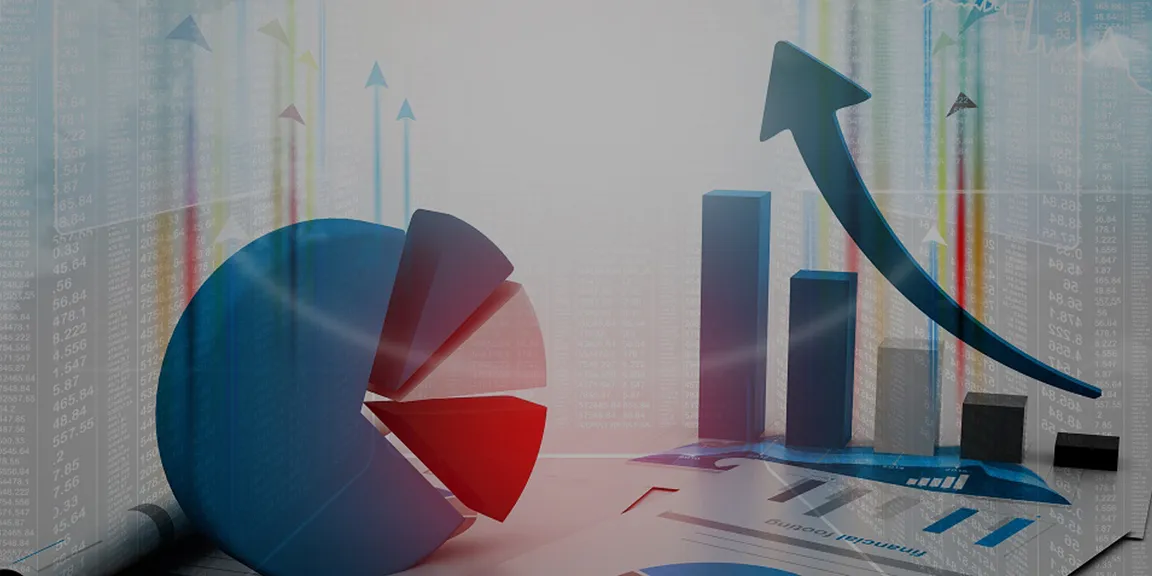

The Role of Predictive Analytics in Marketing & Sales
Though predictive analytics as a statistical tool is tremendously beneficial in cyber-security, risk analysis, inventory management, etc. our focus currently will be on its advantages vis-à-vis marketing and sales forecasting.

What is predictive analytics?
In the time of traditional advertising, a sales team would resort to calling every lead they could acquire and chasing them around, directionless, in order to attain conversion. If the enquiry fell into their lap, good. Otherwise, they had to prepare a list of potential leads and indulge in frantic cold calling, much to the ire of people. There was hardly any personalisation and definitely no scientific way to predict which lead will turn into a sale, resulting in a colossal wastage of time and resources.
Today, with the advancements in digital media, we have predictive analytics - a form of statistical analysis which utilizes data mining (analyzing large chunks of available data) and machine-learning (a type of artificial intelligence that helps computers learn on their own) algorithms to identify your potential customers, track your leads and thereby come up with the most accurate prediction about their future course of action.
No doubt, predictive analytics will target relatively fewer people. But it’s a positive thing because it is these people who have the highest possibility of conversion. It follows the principle of ‘less is more’.
Predictive analytics aims to turn a potential customer into a buyer, and eventually, a loyal customer.
How does predictive analytics work?
Data, data, & more data
Predictive analytics thrives on data. The more the data, the more chances of an accurate prediction. It feeds on data from both internal and external sources.
What are the internal sources?
Internal sources include data from owned media sources. Predictive analytical tools map the relationship between data recorded in the buying cycle on owned media. Essentially, this encompasses uncovering patterns in the history of customer purchases - the actions or “Events” noted on the website, app, etc. during the buying cycle, taken toward making the final purchase.
What are the external sources?
External sources include third party data sources that play a role in the buying cycle. This could include advertising platforms like Google and Facebook, social media channels, even offline mediums.
Predictive analytical tools factor in data from these sources into the patterns from internal sources toward making more accurate sales predictions.
Behavioral analysis
Like any other analytical function in marketing and sales, predictive analytics takes demographic data into account. However, the real results come from the behavioral data recorded by a predictive analytics tool. The tool will map historical user behavior data (not just across your site but across your ad campaigns, app, offline events, etc.) and the relationship between these data points to create patterns which lead to the final sale. Real time data is then measured against these historical patterns to form a predictive model that determines how likely the current user is to turn into a buyer.
Why is predictive analytics important for sales forecasting?
Though predictive analytics as a statistical tool is tremendously beneficial in cyber-security, risk analysis, inventory management, etc. our focus currently will be on its advantages vis-à-vis marketing and sales forecasting.
For any marketing or sales manager, the ability to predict the most likely outcome of the campaign is one of the biggest boons imaginable. Here’s why predictive analytics has changed the way marketing and sales team functions:
1.) Facilitates result-oriented sales
Predictive analytics sifts through gigabytes of data, studies the behaviour of various individuals, and helps the sales team in deducing which individuals are the most interested.
2.) Better conversions
Unlike the carpet bombing technique of traditional marketing, predictive analytics takes a personalised approach to marketing and targets only those customers who are most likely to buy your product or service. Naturally, the conversion ratio will be significantly higher than traditional marketing.
3.) Saves time
Sales reps can focus only on those customers who display the most probability of conversion. The sales people don’t have to waste their time chasing every lead and instead, can utilize their time and energy in closing leads that have shown the most interest.
4.) Cost-effective
From an advertising and sales perspective, it is much more expensive to acquire a new customer than retain an existing one. With predictive analytics, it is more cost-effective to nurture leads that are more likely to close. A meticulously planned strategy will ensure there is no wastage on marketing spends.
5.) Optimize your marketing campaigns
It is not profitable to devise a strategy for a market segment that in all likelihood won’t connect or show interest in your product or service. Predictive analytics will assist the marketing and sales team in knowing who their target audience is, what they buy, how much they spend, which product or service generate maximum curiosity, etc. With this information, a personalized plan can be designed to achieve the best possible conversion ratio.
For e.g: Netflix monitors a user’s preferences over a period of time – the genre, the cast, the director, if the movie is happy or sad, etc. With this data collected, they’ll come up movie suggestions that are most likely to resonate with the users.
Which industry sectors benefit from predictive analytics?
- Real Estate
Using predictive analysis, a marketing and sales team can nurture a prospective lead at every step of the process through calls, emails, and SMSes. From enquiries about a particular property to site visits, predictive analysis helps sales representatives select and target their leads in a more efficient manner which eventually plays an significant role in closing leads.
- E-commerce
Using customers’ purchase lists, which sections or categories they spend most of their time searching, the products they’re looking out for, etc. helps in designing a personalised ad campaign and highlighting products that they are most likely to buy.
- Banking & Finance Services
Predictive analytics plays a crucial role in banking and finance service as it can immediately identify any fraudulent activity. It can also in sanctioning of loans. Using the credit scoring of an individual, it can help ascertain if he or she is likely to default.
- Medical Insurance
An insurance agent has the entire medical history of an individual looking to seek insurance. Using this data, predictive analytics can help in highlighting those individuals who are most likely to suffer from a chronic or life-threatening disease in the future.
- Manufacturing
Using predictive analytics, manufacturers can take several preventive measures to maintain a unit’s efficiency levels. Machines which are likely to breakdown or would require a lot of maintenance in the future can be identified using this form of advanced analytics.
Sell.Do and predictive analytics:
Amura Marketing Technologies’ in-house product, Sell.Do, the best marketing and sales automation platform for real estate, utilises predictive analytics to attain maximum conversion ratio and get you the best returns on your marketing investment.
Here’s a little more about how predictive analytics works for a real estate company, based on our insights and practices:
A decent sized real estate company typically sees about 500-1000 new enquiries flow into their CRM during any given month of active advertising. It becomes important for the sales team to then know which leads to focus on - prioritising them based on data is the key. For the management, with more deals in the pipeline it becomes difficult to forecast sales - depending on instinct driven sales projections from the sales team is not sufficient.
Here’s an example of a good predictor for Sales Forecasting in Real Estate:
a> Pipeline Age when a lead becomes hot
1. For example, it takes about 2.4 weeks for a lead to become hot and come to a negotiation stage.
2. This metric when combined with other factors can help estimate a sale
b> Flow of events seen for leads that have later closed
1. If your software can track all sales & nurturing interactions with your leads it’s possible to find a pattern and then predict closures.
2. For example, number of answered calls, inbound calls, duration of calls, interactions over email, meeting / site visit - if tracked on a timeline can help predict the typical paths that lead to a closure.
3. These paths and the time gap between the events can help build a model to look at current leads - how far have they reached in the buying cycle and then score those leads.
c> Historical Sales figures across various months in a year
1. Historical data about actual sales, dips in site-visits, dips in enquiries segmented by days of week or months of a year; this helps decide when should you focus on executing high impact campaigns.
2. Knowing which time of the year gives you maximum sales, can help you be prepared for it before hand.
Are you implementing predictive analytics for your sales team? Tell us more in the comments. To know more and to implement predictive analytics, get in touch with us here (http://amuratech.com/contact-us/digital-marketing-company-in-pune-India

